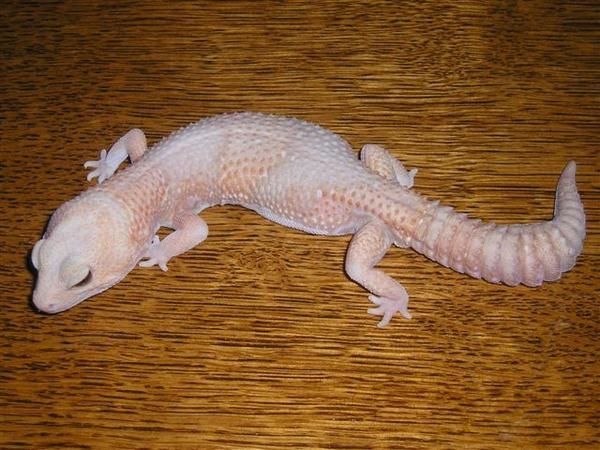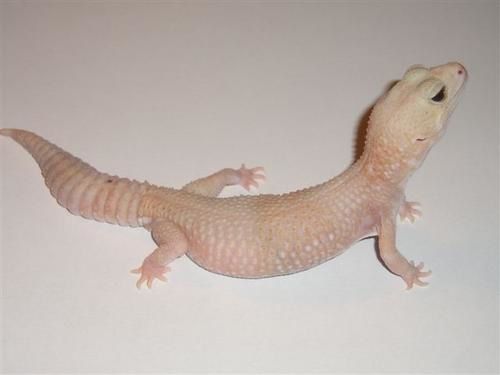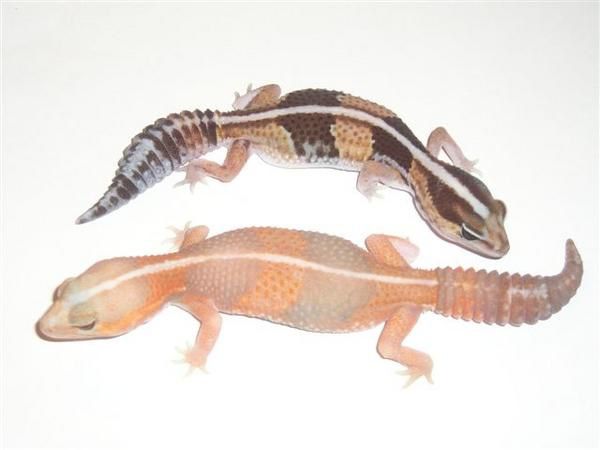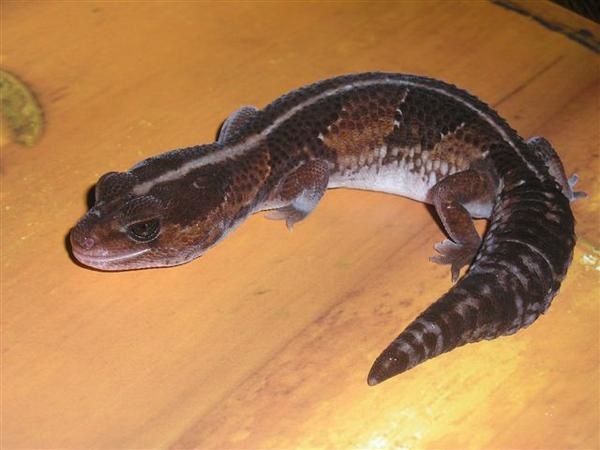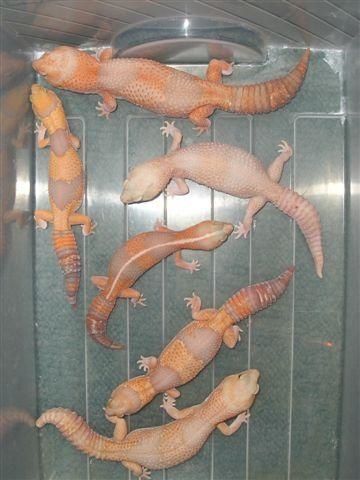You are using an out of date browser. It may not display this or other websites correctly.
You should upgrade or use an alternative browser.
You should upgrade or use an alternative browser.
My news AFT stripe, amel "leucistic"
- Thread starter ludo
- Start date
the_angel_007
New member
Just have to say there dosen´t exist any "leucistic" fattails...
Instead the fattail has been breed with... then they loos there colours!!!!
Instead the fattail has been breed with... then they loos there colours!!!!
PreditorNprey
New member
isn't it impossible to get any offspring from a leo x AFT
the_angel_007
New member
I diden´t meen leo x AFT... sorry for that "leo"... now it´s "fattail"
When you breed AFT X AFT they loose there colours!
When you breed AFT X AFT they loose there colours!
PreditorNprey
New member
I am so confused.
but I am to see the beautiful AFT's
to see the beautiful AFT's
but I am
PreditorNprey
New member
so as the parents breed they loose their coloration?
or the offspring does?
and what causes this?
or the offspring does?
and what causes this?
the_angel_007
New member
Just the parents... not the offspring!
geckomaster
New member
maybe I'm misunderstanding the post here, and correct me if I'm wrong, but those definitely do not appear leucistic to me. The banding and amel coloration is still there. Maybe "ghost amel" or "hypo amel" would be more correct. That said they are definitely some of the prettiest AFT's I've seen, so whatever the "official" designation...kudos on some kickass critters!
the_angel_007
New member
As I said before... the "leucistic" AFT does NOT exist!!!!
The AFT loose the coloration when breeding!
The AFT loose the coloration when breeding!
GekkoGalaksen
New member
This maybe illustrate what we are talking about...
Our Male in March...
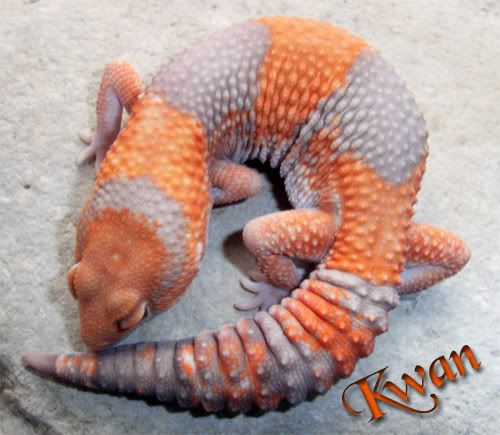
3 month ago we put him in to the females...and now he looks like this

In a couple of years he can be nearly white...
If you don´t breed your amels they will keep their colors...it probably has something to do with hormons.
Our Male in March...

3 month ago we put him in to the females...and now he looks like this

In a couple of years he can be nearly white...
If you don´t breed your amels they will keep their colors...it probably has something to do with hormons.
geckomaster
New member
Yeah, I'm sorry, but you're going off of a faulty principle. Geckos change colors in breeding, stress, temperatures, and I'll even give you age to some extent, but he will never turn into a leucistic which is all white. That is a recessive gene, and not a husbandry/age issue. My male is just as bright today as he was when I got him. It could be more of a stress issue.
GekkoGalaksen
New member
No, it´s not stress!
When I bought my first Amel Fattails the breeder, who is very "big" on Fattails and have so much knowledge (Linda Crawford, Painted Desert Geckos, Canada) told me that this would happend when I start breeding them! And she was absolutly right...the whole breeding group 1.4 has lost a lot of color...some more and some less! I have 2 females that I got at the same time...they haven´t meet the male and they have all their color left...
But I agree...there is no Leucistic Fattails...only Fattails that have lost their color!
and one more thing: Why isnt there any Leucistic babies for sale? .... only adults ... hmmm
When I bought my first Amel Fattails the breeder, who is very "big" on Fattails and have so much knowledge (Linda Crawford, Painted Desert Geckos, Canada) told me that this would happend when I start breeding them! And she was absolutly right...the whole breeding group 1.4 has lost a lot of color...some more and some less! I have 2 females that I got at the same time...they haven´t meet the male and they have all their color left...
But I agree...there is no Leucistic Fattails...only Fattails that have lost their color!
and one more thing: Why isnt there any Leucistic babies for sale? .... only adults ... hmmm
geckomaster
New member
Okay, don't get me wrong, I'm not picking a fight. Breeding in and of itself comes with some degree of stress. Most geckos will lose some color as they age, especially the females from breeding. That said, breeding itself is not going to turn an amel fat-tail into an almost white gecko over time from hormones. There is absolutely no scientific and ancedotal evidence to support this. If this was the case you would see color reduction in normal fat-tails over time and you do not. Many of us have animals that are just as bright/and or same coloration today as when we hatched/purchased them. The color changes are merely due to maturity, environment, and possibly diet. Gecko lovin doesn't do it (if so I'd be playing the love station 24/7 for all my critters and passing them off as leucs or hypos when they hit the preferred coloration...yes I am that greedy :twisted: ).
p.s. there are no leucistic adults
p.s. there are no leucistic adults
geckomaster
New member
Genetic mutations may happen in a variety of ways, but to be transferred to the next generation it all comes down to the mutation on the corresponding alleles on a chromosonal level. The leucisitc trait is just such a mutation. A lightening of coloration due to age, stress, breeding is not a mutation, but in fact a response to one or more factors. Not one of the pictures I have seen even qualifies as a leucistic! They all still obviously have the banding and the coloration they were born with, it's just been muted or dulled. I'm as anxious to see a leucistic aft as anyone, but I'm not going to throw away science in the process.
gixxer3420
New member
Great looking geckos
PaintedDesert
New member
Ludo, your new AFT's are very nice. See the black spot on the female's tail? That is known as a paradox (marking). The age-old name game now begins. How can an amelanistic animal have a black marking, if the very term amelanistic means an absence of melanin? And, how can the eyes be black if the genetic composition of the animal again contains no melanin?
The truth is, the amelanistic AFT is really a hypo melanistic. Everyone has made some really good comments, and I'll let Hilde take on the genetics.
Technically,geckomaster and angel007 are correct. There exists no genetic leucistic AFT. Yet. But, for most of the early enthusiasts working in the field, the two terms are used so interchangeably... it's confusing.
Lotta shows in pictures a very good demonstration of an occurrence I see over and over again in my Amel breeders. They begin to lose their color intensity with breeding, so much so, that after several years... the result is a very pale Amel. The hatchlings are unaffected. The "normal" AFT's live in the same environment, with the same food and supplements.
So,Geckomaster brings up a good point... why don't we see this in the "normal" fattails?
Truth is, I don't know. Thinking out loud here, perhaps the red pigment is "locked" in such a manner in the normal colored AFT's that it is unable to fade. What I do know is that color loss in breeding Amels in my colonies is a well-known phenomenon.

The truth is, the amelanistic AFT is really a hypo melanistic. Everyone has made some really good comments, and I'll let Hilde take on the genetics.
Technically,geckomaster and angel007 are correct. There exists no genetic leucistic AFT. Yet. But, for most of the early enthusiasts working in the field, the two terms are used so interchangeably... it's confusing.
Lotta shows in pictures a very good demonstration of an occurrence I see over and over again in my Amel breeders. They begin to lose their color intensity with breeding, so much so, that after several years... the result is a very pale Amel. The hatchlings are unaffected. The "normal" AFT's live in the same environment, with the same food and supplements.
So,Geckomaster brings up a good point... why don't we see this in the "normal" fattails?
Truth is, I don't know. Thinking out loud here, perhaps the red pigment is "locked" in such a manner in the normal colored AFT's that it is unable to fade. What I do know is that color loss in breeding Amels in my colonies is a well-known phenomenon.

Oh boy, this is common among leo breeders, now we've reached the same stage with AFTs.
Okay, look at leos. Even hypo tangs (particularly females) can regain the typical leopard spots after breeding. Some do, some don't, some get really spotty like wild type, some just get a few spots. In albino leos, they go dark and dingy, brownish in colour. This is due to breeding - all hormone related (I believe it's estrogen, the female hormone). In pregnant human females, the hormone is repsonsible for some pigment changes - it's the same deal with these geckos. The change increases melanin in the skin. Wild type, tangs and any non-albinos go dark from the melanin. Now with albino leos and amel AFTs, there typically is very little melanin produced. Even though they don't look like they have melanin, AFTs can produce 'some' or at least go part way through the melanin production process which results in darker or duller 'albino' colouring.
So, what happens when an AFT breeds? Ever noticed your normal AFTs go darker with age? I bet they've bred... and they've increased melanin so they go dark. With amels, who don't really produce melanin in the same way, the colour still changes. Since they don't produce melanin, the places where a 'normal wild type' would have melanin, will change colour. The melanin would normally replace the pink, orange, red shades ina normal and produce a darker shade of it. In an amel, 'replacing' these colours means they are removed, but no melanin is put in those spots. All you get is a lighter shade of red, orange, salmon, pink, whatever colour you want to call those bands. The 'non-melanin' colour is white - the original colour is removed, the white replaces it. The gecko 'is trying' to add melanin to it's body, but the only thing it can do is substitute white. White, as we know, will wash out the bright non-breeding colours and produce what some people call leucistic. There's still no leucistic fat-tails, or nobody has yet, to my knowledge adtmitted to producing any... same as with leos.
This is the unscientific, easy to understand short story, it's more complicated 'in real life'. If you want the complete scientific explanantion with proper terminology, it needs a dictionary in-hand and some brain-wracking thoughts to understand it. Some of you probably know the story already, it's your bread and butter. But for general use, this works.
Okay, look at leos. Even hypo tangs (particularly females) can regain the typical leopard spots after breeding. Some do, some don't, some get really spotty like wild type, some just get a few spots. In albino leos, they go dark and dingy, brownish in colour. This is due to breeding - all hormone related (I believe it's estrogen, the female hormone). In pregnant human females, the hormone is repsonsible for some pigment changes - it's the same deal with these geckos. The change increases melanin in the skin. Wild type, tangs and any non-albinos go dark from the melanin. Now with albino leos and amel AFTs, there typically is very little melanin produced. Even though they don't look like they have melanin, AFTs can produce 'some' or at least go part way through the melanin production process which results in darker or duller 'albino' colouring.
So, what happens when an AFT breeds? Ever noticed your normal AFTs go darker with age? I bet they've bred... and they've increased melanin so they go dark. With amels, who don't really produce melanin in the same way, the colour still changes. Since they don't produce melanin, the places where a 'normal wild type' would have melanin, will change colour. The melanin would normally replace the pink, orange, red shades ina normal and produce a darker shade of it. In an amel, 'replacing' these colours means they are removed, but no melanin is put in those spots. All you get is a lighter shade of red, orange, salmon, pink, whatever colour you want to call those bands. The 'non-melanin' colour is white - the original colour is removed, the white replaces it. The gecko 'is trying' to add melanin to it's body, but the only thing it can do is substitute white. White, as we know, will wash out the bright non-breeding colours and produce what some people call leucistic. There's still no leucistic fat-tails, or nobody has yet, to my knowledge adtmitted to producing any... same as with leos.
This is the unscientific, easy to understand short story, it's more complicated 'in real life'. If you want the complete scientific explanantion with proper terminology, it needs a dictionary in-hand and some brain-wracking thoughts to understand it. Some of you probably know the story already, it's your bread and butter. But for general use, this works.


